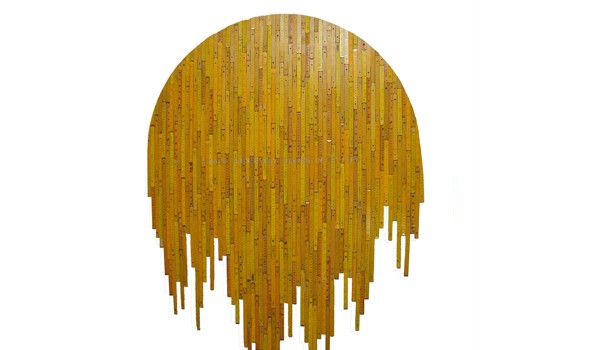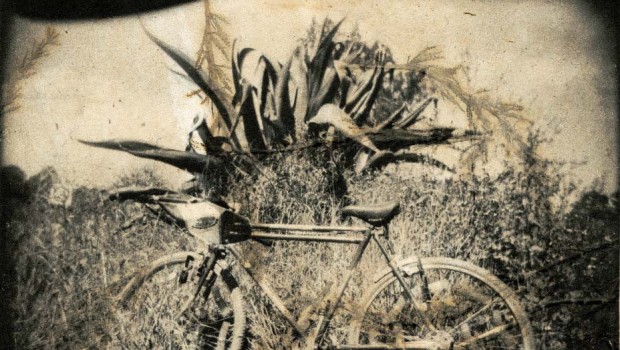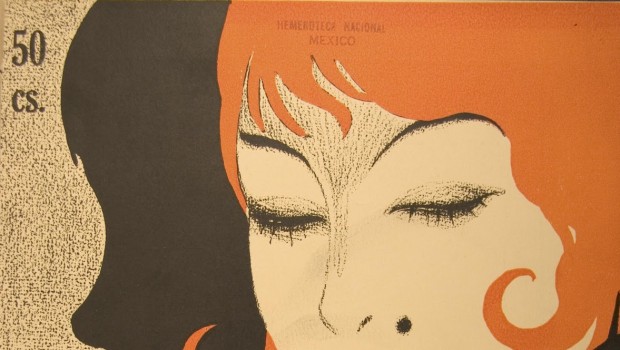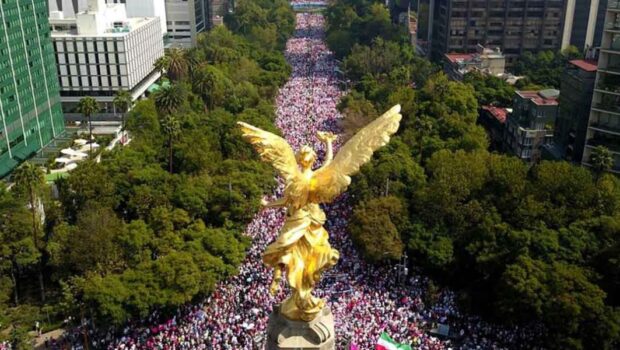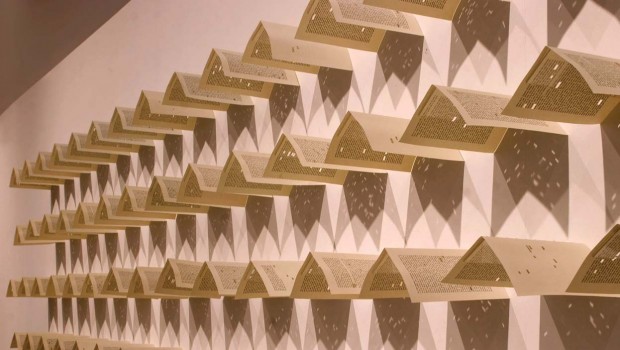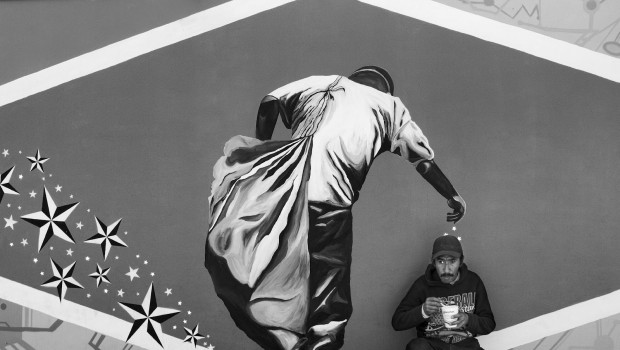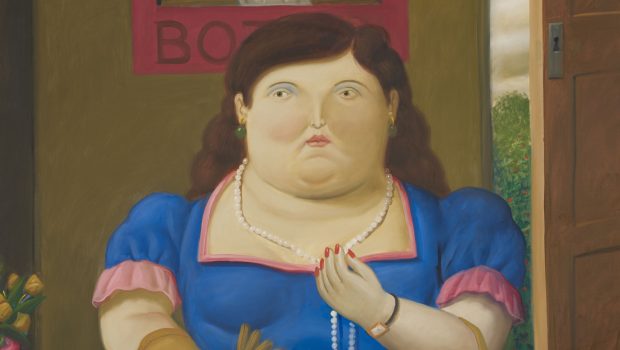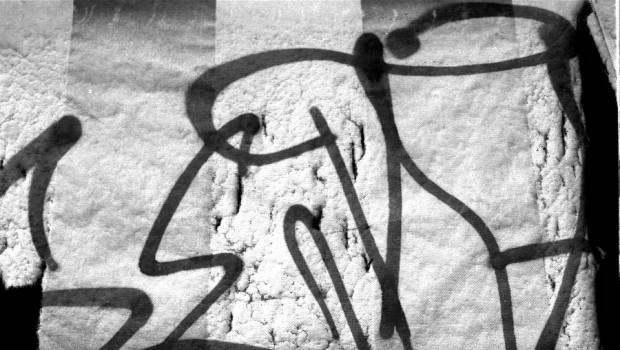Nor Space, Nor Time
Rose Mary Salum
Translated to English by Tanya Huntington
Rose Mary Salum: From the start of your career, the concept of what can be gauged, or how to measure the immeasurable, has been a constant. Can you elaborate?
Pedro Tyler: Yes, measurements have been recurrent in my work, although I believe it’s best to say that the constant here has been the immeasurable. In other words, I adapt different materials or objects in order to approach themes that I am interested in and that, in general, unite elements that are paradoxical, or that might seem to have contradictory explanations. For example: a deaf man composing music, a rainbow at midnight, an artist whose creativity was ended by his own hand. Twelve years ago, I ran across this phrase in a book: “Measure everything you can, and make whatever you can’t measurable.” This became the catalyst for a series of works with rulers, tape measures, and slide rules. Somehow, what this phrase did was lend clarity and focus to my work. At the time, I was working in connection with my family history–distances, absences, feelings–and little by little, I starting sectioning rulers as a metaphor for all those things that cannot be measured. Then I started joining together some rulers and articulating them with others, which made the numbers or the complexity required to understand the system “grow.” Therefore I can say that yes, indeed, I am interested in the measurable, in rational capacity and obsession. But from the inside, so to speak. Thus, I can point out the fissures, the edge from which an ever-present immensity has emerged.
RMS: The yellow ruler, an object that is so prevalent in your work, was previously used by Brazilian artist Meireles. What attracts you to his work, and what sets you apart?
PT: When I started working with rulers at college, a couple of professors made comments to me about Meireles’ work. There, I became better informed about his art and saw that it was geared towards different things. It seemed interesting to me to work on something that had already been worked on by another, but doing it my own way, appropriating the material in a manner different from Meireles and other artists who have worked with or on this object. I would say that is what brings us together, because by choosing the same ground, we share a certain interest in the objects being selected. As a major practical difference, I would say that Meireles alters the ruler as an inudstrial ready-made, comissioning rulers with rearranged scales and numbers. I, on the other hand, work with found objects, altering them with my own hands. The most common rulers used to be yellow, which is why I started out working with those. Several years later, I found white rulers, and not long ago, an entire array of colors, which I have gradually incorporated into my work. Not to mention stainless steel, acrylic, and aluminum rulers. Conceptually, I use rulers as a symbol of reason in order to speak, among other things, about nonsense, whereas I believe Meireles uses them, like bills or Coca-Cola bottles, to highlight the arbitrary nature of patterns, whether they are measures or the value adjudicated to a piece of paper.
RMS: Yet in your more recent exhibitions, I perceive a new concern: spatial layouts. Can you tell us a little more about that?
PT: Actually, spatial layouts have always been present. I recall the first day a college drawing professor asked us what we wanted to be. There was total silence. Then I answered, “I want to be a sculptor.” To me the initial idea, the initial problem, and the initial response is always spatial. I consider myself to be a traditional sculptor, no matter whether my works are videos, photographs, objects, etc. My way of confronting things is always spatial. And in light of the spatial layout of a show, I try to have the different works situated–or rather, I try to situate the works–so that they interact, but moreover and perhaps most importantly, I consider how they are going to interact with visitors. Here again is the issue of proportion, or of measurement, and measurements are corporal issues, definitely spatial. Looking up or looking down, walking toward the sides, seeing oneself reflected in a work or throwing one’s shadow. Each one of these aspects has its interpretation. And I believe they enrich the experience of each artwork.
RMS: Going back to the first question: to be more specific, when you talk about opposites, there are two positions that seem to stand out in the body of your work. These are life and death, light and shadow. Can you tell us more, especially with regards to death and shadow?
PT: Hmmm, you know, it’s not that clear to me. I don’t believe they are such opposite concepts, I prefer to think of them as counterpoint. For my college thesis, I spoke about counterpoint between ideas or materials; for example, when you put two similar things together, their differences are highlighted. But yes, as you were saying, these themes are present in my work. In fact, they generate practically all of my work. But I do not see them as being so contrary. To me, life and death are one, perhaps because of my religious beliefs, and while the most common way of thinking about death is to relate it to shadows, to me, death is light. Then there is the experience some have had when they are close to dying, of seeing a light at the end of a tunnel, or the Buddist concept of dissolving into oblivion. That oblivion, that nothingness, can be both darkness and blinding light. If I had to compare light and shadow, I would say that to me, shadows are the past, and light is the present. The light of the soul, the shadows of the body. And since we are on the topic of portraiture, every time I run across another artist who has taken his or her own life, it saddens me. Perhaps that is why I work with them. In a certain way, these people continue to live through their legacy.
RMS: Not Space, Nor Time. How did you come up with this title, and what is your primordial concern?
PT: Generally, while preparing a show, there are several common threads that guide my work in the studio. On the one hand, I had been working on and researching this series of works regarding the light and shadows of artists who had committed suidice. And delving futher into the work of one of these artists, Gilles Deleuze, I found the book Painting: The concept of diagram, which is an account of some of his classes Deleuze that approached the influence or relationship between painting and philosophy. During these classes, he talked a lot about color and, among other things, he would ask: What is color? And then he would say: Color is not space, nor time; the optic qualities of objects are what reflect the colored light. And since I was delving deeper in terms of light and shadow, I found Color, and this meant realizing that color is light. It is a certain kind of light. In the same book, he also speaks of the fact that colors are dirty or clouded light. This idea that color can be explained by something “negative” lent meaning to what I had wanted to do for years, gathering into a single work several artists who took their lives. Thus Darkening the Light came together, a work of 90 portraits of artists organized alphabetically and in primary colors, plus black and white, depending on their professions. Then it was as if every last chip fell into place. Down to every last detail, even the fact that my exhibition would be held at the same time as that of Carlos Cruz Diez. And it truly motivated me that the show would orbit conceptually around color, that it would share a common thread with the other show in the same gallery. On the other hand, like I said before, while I consider myself to be a sculptor, sculpture is the exact opposite of the title. Sculpture is space and time, and color is not generally one of the specific or fundamental themes of sculpture, unlike form, material, weight, etc. In my preivous works, there was no such focus on color or the combination of colors in a work, and here also Deleuze had something to say. He spoke of artists who took their time mastering color and used as an example Van Gogh, who in his early works used earthy tones. Once he had succeded in mastering color, he killed himself. This is not the case with Rothko, whose final years are the darkest, even though he used to say that black was just another color of light, something that can be appreciated in the Rothko Chapel and the Menil Collection, a few steps away from this gallery. Thus I found it interesting to base myself on these three artists: Deleuze, Van Gogh, and Rothko. Working with regards to their experiences, concepts, ideas, colors, and forms.
RMS: Your work is strongly influenced by other disciplines, such as philosophy (Descartes), or literature (Akutagawa). Do you believe that visual arts ought to be based on more well-rounded proposals, like yours? This is a pertinent issue, because some artists are more focused on visual rather than ideological aspects.
PT: To me, the greatest error lies in believing that art must be something well-defined, figurative, abstract, intellectual, etc. Largely because that is a mistake that I made. At one point, I was set on abstract art. And given that as a child, I listened to a lot of classical music, one day while reading Kandinsky (when I was older) he gave classical or instrumental music as the greatest example of abstract art, and that made me see things differently. I don’t believe there is only one right way to make art. Each person has to seek out the form that suits them most. I am interested in the conceptual side, but I do not push aesthetics aside. It is true that I do a lot of research through reading, observing, listening to music, philosophy, and literature, which inspires me. But in the end, what I do is visual, and so I seek out a middle ground between form and content. I am interested in the struggle that arises whenever one sees artworks and they tell you one thing, in terms of the senses, but through the title or the text, other information is generated; looking back, I am contrasting layers of meaning. Moreover, often the kickstart in these works is purely intuitive, and as I go along, I gradually find new meaning. On the other hand, I am aware that while I do use titles that speak of myths, legends, or ideas that form part of fairly basic knowledge, if someone does not possess that cultural baggage, it’s as though my works have no ideology and will be interpreted as purely visual. Such are the rules of the game.
Desde el inicio de tu carrera la idea de lo mensurable ha sido una constante: ¿Cómo medir lo que no se puede medir? ¿Podrías hablar de este tema que ha sido una constante en tu carrera?
Sí, las medidas han sido recurrentes en mi obra, aunque creo que es mejor decir que la idea constante ha sido lo inconmensurable. Es decir, me valgo de distintos materiales u objetos para abordar los temas que me interesan y que en general relacionan lo paradojal, cosas que parecieran tener explicaciones contradictorias, por ejemplo en un sordo componiendo música, un arco iris a media noche, o un artista que al matarse deja de crear. Hace 12 años me crucé con esta frase en un libro, “Mide todo lo que puedas medir, y lo que no, hazlo medible”, lo que fue el catalizador de la serie de trabajos con reglas, cintas de medir y metros articulables. De alguna manera esta frase lo que hizo fue encausar y dar una claridad al trabajo. En ese entonces estaba trabajando en torno a mi historia familiar, las distancias, ausencias, los sentimientos, de a poco comencé a seccionar las reglas como una metáfora de que hay cosas que no se pueden medir. Después fui uniendo unas reglas y articulándolas con otras, lo que hacía que “crecieran” los números o la complejidad para entender el sistema. Entonces puedo decir que sí, efectivamente me interesa lo mensurable, la capacidad y obsesión racional pero, para desde dentro, en cierta forma señalar las fisuras, el borde por donde se asoma la siempre presente inmensidad.
La regla amarilla, ese objeto que es tan protagónico en tu obra, ya había sido usado anteriormente por el brasileño Meireles. ¿Qué te acerca y te distingue de su obra?
Si, cuando empecé a trabajar con reglas en la universidad un par de profesores me comentaron del trabajo de Meireles. Ahí me informé de su obra y vi que apuntaban a cosas distintas, por lo cual me pareció interesante seguir trabajando con algo que ya había sido trabajado por otro. Hacerlo a mi manera, apropiándome del material en una forma distinta a la de Meireles y otros artistas que trabajan o han trabajado este objeto. Diría que es eso lo que nos acerca, porque al elegir el mismo soporte cierto interés compartimos en la elección del objeto. Como gran diferencia práctica diría que Meireles altera la regla como un ready made industrial, al mandar a hacer reglas con las escalas y números desordenados. Yo en cambio, trabajo con los objetos tal cual los encuentro y después los altero con mis propias manos. Antes lo más común era la regla amarilla y por eso empecé a trabajar con ella, varios años después encontré reglas blancas, y ahora hace poco toda la gama de colores, lo que he ido incorporando a mi obra, así como las reglas de acero inoxidable, acrílico y aluminio. Conceptualmente, yo utilizo la regla como símbolo de la razón para hablar entre otras cosas de la sinrazón y creo que él, al igual que los billetes o las botellas de Coca Cola, la utiliza para resaltar lo arbitrario del patrón, sea éste la medida o el valor adjudicado a un pedazo de papel.
Sin embargo, en tus más recientes exhibiciones, puedo ver una nueva preocupación: las disposiciones espaciales ¿Podrías platicarnos un poco más del tema ?
En realidad las disposiciones espaciales siempre han estado presentes. Recuerdo que el primer día en la universidad un profesor de dibujo nos preguntó que queríamos ser, ante el silencio respondí “yo quiero ser escultor”. Para mí la primera idea, el primer problema, y la primera respuesta siempre es espacial. Yo me considero un escultor tradicional, sea que haga obras que sean videos, fotografías, objetos, etc. Siempre mi manera de enfrentar las cosas es espacial. Y en función de las disposiciones espaciales de una muestra trato que las distintas obras se sitúen o más bien sitúo las obras para que funcionen entre sí, pero también y tal vez más importante, considero cómo van a funcionar con el visitante. Aquí de nuevo es un problema de proporciones, de medidas, y las medidas son problemas corporales, en definitiva espaciales. Mirar para arriba o para abajo, caminar hacia los lados, verse reflejado en una obra o proyectarle sombra. Cada uno de estos aspectos tiene su interpretación. Y creo que enriquecen la experiencia de cada obra.
Volviendo a la primera pregunta, específicamente cuando hablas de los opuestos, hay dos posiciones que parecen sobresalir en el cuerpo de tu trabajo y eso es la vida y la muerte, la luz y las sombras. Puedes elaborar sobre este tema, específicamente respectos a la muerte y las sombras.
Mmm, sabes que no lo tengo tan claro. No creo que sean conceptos tan opuestos, me gusta más la idea de contraposición. Para mi tesis en la universidad yo hablaba de contraposición de ideas o materiales, por ejemplo al poner juntas dos cosas similares se resaltan sus diferencias. Pero sí, como decías esos temas están presentes en mi obra, de hecho son generadores de casi todas las obras, pero no los veo tan opuestos. Para mí vida y muerte son una, será porque soy creyente, y si bien la manera más común de pensar en la muerte es relacionarla a las tinieblas, para mí la muerte es luz. También está la experiencia de algunos que han estado cerca de morir de ver una la luz al final de un túnel, o la idea budista de disolverse en la nada; esa nada, ese vacío, puede ser tanto oscuridad como luz enceguecedora. Si tuviera que relacionar luz y sombras diría que para mí las sombras son el pasado y la luz el presente. La luz el alma y el cuerpo las sombras.Y ya hablando sobre el caso específico de las obras con los retratos, cada vez que encuentro un nuevo artista que se quitó la vida, es un hecho triste, tal vez por eso mismo es que los trabajo, en cierta manera estas personas están vivas en su legado.
NotSpace, Nor Time. Cómo surge este título y cual es tu preocupación primordial?
Generalmente al preparar una muestra tengo varios hilos conductores que van encausando mi trabajo en el taller. Por un lado venía trabajando e investigando esta serie de trabajos alrededor de las luces y sombras de los artistas que se suicidaron. Y metiéndome más en la obra de Gilles Delleuze como uno de estos artistas, encontré el libro “Pintura. El concepto de diagrama”, que es el registro de unas clases impartidas por Delleuze abordando la influencia o relación de la pintura en la filosofía. En estas clases habló mucho sobre el color y, entre otras cosas, preguntaba: ¿Qué cosa es el color? Y decía: El color no es espacio, ni tiempo, son las cualidades ópticas de los objetos las que reflejan la luz coloreada. Yo que estaba profundizando en cuanto a la luz y las sombras, encontré el Color, y fue darme cuenta que el color es luz. Es cierto tipo de luz. También en el mismo libro se habla de que los colores son luz sucia o turbia. Esta idea de que el color se explique por algo “negativo” me dio el sentido a lo que hace años quería hacer de reunir en una obra a varios artistas que se quitaron la vida. Así se concretó “Oscureciendo la luz”, la obra de 90 retratos de artistas organizados alfabéticamente y en los colores primarios, más blanco y negro, según sus profesiones. Entonces como que cada ficha fue cayendo en su lugar. No menor era el detalle de que mi exposición iba a ser simultánea a la de Carlos Cruz Diez. Y me motivaba enormemente que la muestra conceptualmente girara alrededor del color, que tuviera un hilo conductor con la otra muestra en la galería. Por otro lado, como te decía antes, siendo que me considero escultor, la escultura es precisamente todo lo contrario del título. La escultura es espacio y tiempo, y mayoritariamente el color no es uno de los temas específicos o fundamentales de la escultura, como lo puede ser la forma, el material, el peso, etc. En mis obras anteriores no había este protagonismo de color o de unión de colores en una obra, y aquí también Delleuze tenía algo que decir. El hablaba de los artistas que se toman su tiempo para dominar el color y ponía el caso de Van Gogh, que en sus primeras obras usaba colores terrosos y cuando logra dominar el color es cuando se mata. Contrariamente al caso de Rothko, donde sus últimos años son los más oscuros, aún cuando él decía que el negro era otro de los colores de la luz, cosa que pude apreciar en la Rothko Chapel y en la colección Menil, a pocos pasos de la galería. Entonces me pareció interesante centrarme en estos tres artistas: Delleuze, Van Gogh y Rothko. Trabajando en relación a estas experiencias, conceptos, ideas, colores y formas.
Tu obra tiene una influencia importante de otras disciplinas, como es el caso de la filosofía (Descartes), la literatura ( Akutagawa). ¿Crees que el arte visual debe estar necesariamente sustentado en una propuesta más completa como la tuya? La pregunta viene al caso porque hay artistas más concentrados en la parte visual que en la ideológica
Para mí el error más grande es pensar que el arte tiene que ser algo definido, figurativo, abstracto, intelectual, etc. En gran parte porque es un error que cometí; en algún momento le tuve idea al arte abstracto. Y siendo que de chico escuchaba mucha música clásica, un día leyendo a Kandinsky (ya más grande), él ponía como el gran ejemplo de arte abstracto a la música clásica o instrumental, y esto me hizo ver las cosas de otra manera. No creo que haya una manera de hacer arte. Cada persona tiene que buscar la forma que más le acomoda.
A mí me interesa la parte conceptual, pero no dejo de lado la parte estética. Es cierto que me inspiro/investigo mucho leyendo, mirando, escuchando música, filosofía, literatura. Pero finalmente lo que hago son cosas visuales, y como tales, busco el punto intermedio entre forma y contenido. Me interesa esa lucha que se da cuando uno ve las obras y sensorialmente te dicen algo, pero por el título, o el texto se genera otra información; volviendo atrás estoy contraponiendo capas de significados. También muchas veces el puntapié de las obras es puramente intuitivo y sobre la marcha voy encontrándole sus sentidos. Por otra parte soy consciente, que si bien uso títulos que hablan de mitos, leyendas o ideas que son de conocimiento bastante general, si la persona no tiene esa mochila cultural, es como si mis obras no tuvieran ideología, y serán interpretadas únicamente por lo visual. Así son las reglas del juego.
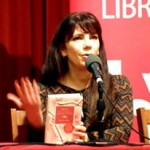 Rose Mary Salum is the founder and director of Literal, Latin American Voices. She´s the author of Delta de las arenas, cuentos árabes, cuentos judíos (Literal Publishing, 2013) among other titles.
Rose Mary Salum is the founder and director of Literal, Latin American Voices. She´s the author of Delta de las arenas, cuentos árabes, cuentos judíos (Literal Publishing, 2013) among other titles.


